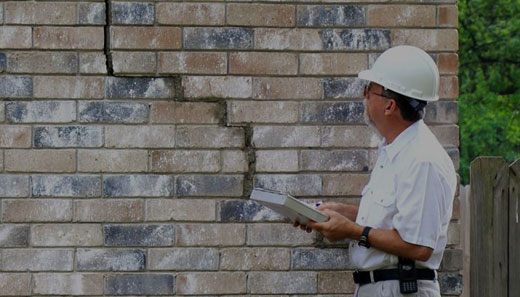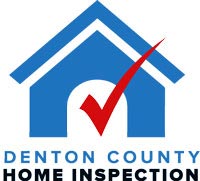Home Buyers Inspection
 Buyers Inspections are the most common type of inspection in the United States. The persons purchasing the property hire an Inspector to help identify major defects and other problems so they can make an informed decision about the building’s condition and the expense of related repairs.
Buyers Inspections are the most common type of inspection in the United States. The persons purchasing the property hire an Inspector to help identify major defects and other problems so they can make an informed decision about the building’s condition and the expense of related repairs.
Home Sellers Inspection
A Home Sellers Inspection is when a homeowner who is selling their house hires an Inspector to identify problems with their house. The seller can elect to share the report with any potential buyers or to make any necessary repairs so the house is known to be in good condition encouraging a quick sale. One Home Inspector’s organization offers a program which helps market a house as “Move-In Certified”, that is the house is in a condition where the new owners can promptly move in without making substantial repairs.
Foreclosure Home Inspection
Foreclosure home inspections are often referred to as REO (Real Estate Owned) Inspections. Professional Home Inspectors are qualified to do these, but there are other Inspectors that also do only minimal foreclosure inspections: Certified Field Inspectors and the Certified Property Preservation Specialist. These Inspectors may or may not be qualified to do State Licensed Home Inspections.
Four Point Inspection
Insurance companies sometimes require a Home Inspection of a house’s roof and the HVAC, electrical and plumbing systems before providing homeowners insurance. This inspection is usually only required on homes which are 20 –25 years old or older. The name four point inspection derives from the four areas of interest.
Disaster Inspection
A disaster Inspection occurs after a natural disaster such as a hurricane, earthquake or tornado in which a large numbers of buildings may have been damaged. In the United States the Federal Emergency Management Agency (FEMA) prepares for and coordinates large scale disaster relief efforts including the inspection of damaged buildings. Disaster inspectors document conditions of buildings for government disaster relief payments.
Section 8 Home Inspection
In the United States the federal and state governments provide housing subsidies to low income people through a program often known as Section 8. The government expects that the housing will be “fit for habitation” so a Section 8 inspection identifies compliance with HUD’s Housing Quality Standards (HQS).
Pre-delivery Home Inspection
The pre-delivery home inspection, which generally applies to newly built homes, is a real estate term that means the buyer has the option (or requirement, depending upon how the real estate contract is written) to inspect the property prior to closing or settlement. These Inspections generally take place up to a week before a closing, and they generally allow buyers the first opportunity to inspect their new home. Additionally, the Inspection is to ensure that all terms of the contract have been met, that the home is substantially completed, and that major items are in working order.
Along with a representative of the builder (generally the construction supervisor or foreman), the buyers may be accompanied by a Home Inspector of their choice. Any noted defects are added to a punch list for completion prior to closing. Often a second Inspection is conducted to ensure that the defects have been corrected.
The house is in a condition where the new owners can promptly move in without making substantial repairs.
Foreclosure Home Inspection
Many local governments within the United States and Canada require that New-Home builders provide a home warranty for a limited period, and this typically results in home builders conducting a pre-delivery inspection with the buyer.
In a resale situation, this type of inspection is often termed the final walk-through, and, based on the contract’s provisions, it allows the buyer the opportunity to inspect the home prior to closing to ensure that agreed-upon repairs or improvements have been completed.
A better Inspection for a newly built home is to inspect the home during the stages it is being constructed. The typical inspection stages include: foundation pour, structure, pre-drywall, insulation, and final. Important issues such as structural support, duct routing, and plumbing can not be completely inspected after the drywall or attic insulation is installed.
Eleventh Month Home Inspection
In the United States, some states require a builder to warranty a new house for one year. An 11th month inspection is an Inspection of the new home before the warranty ends to discover any defects requiring warranty service.
Structural Inspection
Structural inspections report on the foundation and supporting elements of a home. When performing a structure inspection, the Home Inspector will look for a variety of distress indications that may result in repair or further evaluation.
Plumbing Home Inspection
During a home inspection, a home inspector will carry out a visual observation and general operation of the plumbing system. The Inspection will consider readily accessible pipes, fixtures and components, while noting recognized adverse and material defects present at the time of inspection. Minor defects may be also reported. The plumbing home inspection typically reviews the visible water supply and waste removal sewage system. Furthermore, a plumbing inspection often involves a closer observation than just the outside, especially in the case of galvanized pipes, which may not appear to have defects superficially.
Water flow performance is judged by running water through the pipes and sewage systems in normal modes and in a representative manner. The water heater is usually inspected for heating of the water and safe operation which may include venting (gas/oil/butane models) and the temperature and pressure relief valve. Water heater types include storage tank and on-demand systems using a variety of energy sources (typically electric or gas).
Most homes obtain water supply from a city, nearby town, cooperative or private source. Water may be obtained from a lake, river, reservoir, or well. If the source of water happens to be private or non-approved, the home inspector should recommend the client opt for an expert to evaluate the integrity of the water supply. Testing private wells for contaminates is important. Ideally the inspection intends to reduce risk for the buyer by reporting observed material defects. A defect may be a repair, maintenance or improvement consideration with or without a safety association.
Heating Ventilation and Air Conditioning (HVAC) Home Inspection
A heating ventilation and air conditioning (HVAC) home inspection reviews the heating and cooling system of a home from a performance perspective. The inspection usually does not inspect or compare to codes or manufacturer requirements. Heating is provided typically by a forced air furnace distributed by duct work or a water/steam boiler using radiators or convectors, but space heaters, heat pumps and other methods are also in use. The energy source is usually natural gas, fuel oil, or electric, but other sources include butane, wood and Geo-thermal. Cooling can be described as a split system, packaged unit, fan coil, heat pump, an evaporative cooler, or window/through-the-wall a/c unit.
A typical home inspection will carry out a visual observation and operation of the HVAC system. The Inspection will consider visible and readily accessible components, while noting recognized adverse and material defects present at the time of inspection. Home inspectors are not required to disassemble the equipment. The Home Inspection Report may include a description of the system by its key components. Ideally the inspection intends to reduce risk for the buyer by reporting observed material defects. A defect may be a repair, maintenance or improvement consideration with or without a safety association. An optional statement on perceived useful remaining life may be provided.
Thermal Imaging Home Inspection
A thermal imaging inspection using an infrared camera can provide inspectors with information on home energy loss, heat gain/loss through the exterior walls and roof, moisture leaks, and improper electrical system conditions that are typically not visible to the naked eye. Thermal imaging is not considered part of a General Home Inspection because it exceeds the scope of inspection Standards of Practice.
Pool and Spa Home Inspection
Inspection of swimming pools and spas not considered part of a general home inspection because their inspection exceeds the scope of inspection standards of practice.
Tree Health Home Inspection
Inspection of trees on the property is not considered part of a general home inspection because their inspection exceeds the scope of inspection standards of practice. This type of inspection is typically performed by a certified Arborist and assesses the safety and condition of the trees on a property before the sales agreement is executed.
In need of a home inspection service?
Contact our office today. We are ready to assist you with your home inspection needs.

